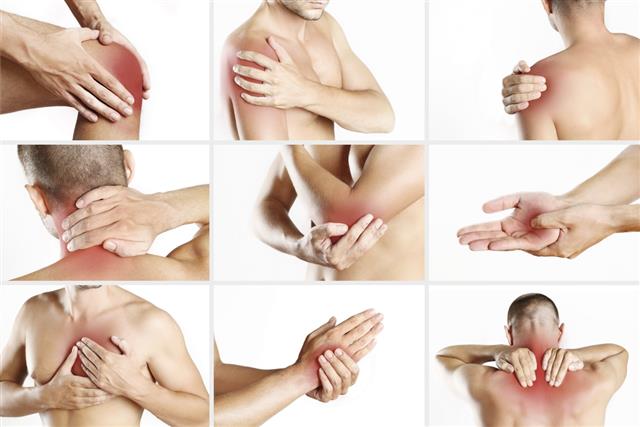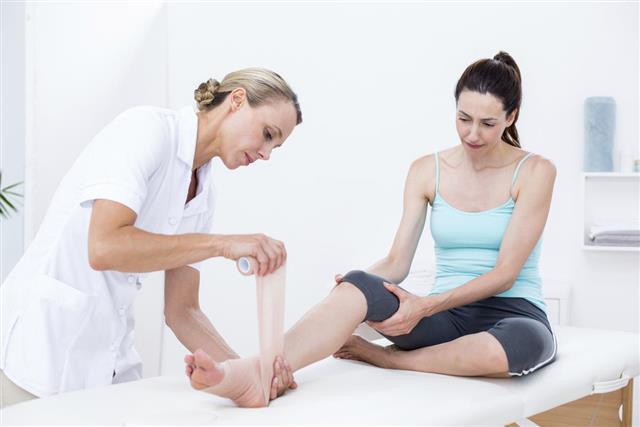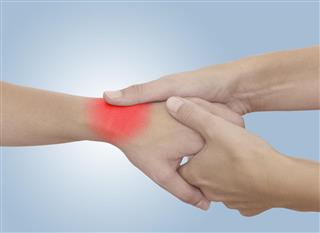
An injury to the bones or muscles of the sacroiliac joint causes pain in that region. Disorders like arthritis, psoriasis, gout, rheumatoid, spondylitis, bacterial, and viral infections are some reasons that can cause destruction of tissues/muscles and backache. Millions of people all over the world experience this pain, a result of wearing of bones and muscles that form the sacroiliac joint. This article provides some information about the same.
Sacroiliac joint pain is related to problems in the sacroiliac joint that brings together the base of our spine with the pelvis. It is a medical condition in which the affected person experiences pain in the lower back and in/around the sacroiliac joint.
This joint is an assembly of the sacrum (a triangular-shaped bone situated below the lumbar spine) and the right and left iliac bones (also known as ileum which forms pelvis) surrounded/bound together by bundles of tissues which are known as ligaments. The sacrum is relatively immobile and the joint assembly can rotate only about 3 to 4 degrees and can displace or move not more than 2 mm. This entire assembly of bones and tissues bears the pressure of the upper body and absorbs shock.
Symptoms
Pain in the area surrounding sacroiliac joint is the most common symptom of this disorder. In most of the cases, the pain is also extended to the lower back, hips, groin, and thighs. Sometimes, the pain erupts in the form of packets and the intensity increases when one is standing, walking, or sitting in a particular or uncomfortable posture. Inflammation of the sacroiliac joint and muscles around it is also experienced by people having this medical condition, which may also lead to stiffness and a burning sensation in the pelvis.
Causes
This pain is a symptom for several diseases. Sometimes, due to excessive strain on the ligaments, or the facet joints, or sacroiliac joints, the affected person may experience pain in the lower back. Abnormal difference in length of the legs in a person (one leg longer than the other leg), abnormal or wrong walking style, incorrect posture, etc., are a few reasons of excessive stress caused to the sacroiliac joint that results in pain.
Similar to any other part of the body, the joint is also connected to the brain through nerves which informs the brain about the stress and pain in this area. As mentioned above, the sacroiliac joint assembly and bones surrounding it support the upper portion of the body, the pressure caused due to the weight of the upper body leads to wearing of the same.
The pain in women is caused due to the relaxed ligaments (a special hormone released by the body during pregnancy relaxes the ligaments) which results in extra flexibility and increased movement of the muscles and bones surrounding the sacroiliac joint. This may lead to extra wearing out of the joint.
Along with the above mentioned conditions, this pain is also caused due to other problems such as an injury to the bones or muscles that constitute this joint, disorders such as various types of arthritis, psoriasis, gout, rheumatoid, spondylitis, etc., and also bacterial and viral infection which causes destruction of tissues and muscles, and backache.
Diagnosis
As mentioned above, it is very hard to find the exact source if a person is experiencing pain in the lower part of the body. The doctor may need to carefully examine the symptoms that one is experiencing and perform few more tests to successfully diagnose and confirm the problem related to the joint.
Along with one’s medical history and habits, he/she may also need to undergo tests such as X-ray of the back, pelvis area, etc., CT scan, and magnetic resonance imaging (MRI scan) to help understand if there is any problem related to tissues and muscles surrounding the sacroiliac joint. Furthermore, bone scan may also be done to help find out if any type of wearing exists and he/she may also need to undergo tests to confirm any type of viral or bacterial infection.
Treatment
The treatment involves use of medications, physical treatment, and surgery. Medication includes injecting steroids and relaxing agents to the bones/muscles and tissues of the affected area, intake of medicines that can help fill the wearing of tissues and muscles and help build the bones back to normal. The doctor may also treat the sacroiliac joint dysfunction with the help of physical treatment such as exercise, massage, extractions, etc.
Unfortunately, any problem related to the back is very hard to treat completely. Most of the time, the treatments involving medications, injection of relaxing agents, extractions, massages, and exercises, etc., do not treat the dysfunction completely, they only provide comfort which does not last for longer. As a result, surgery remains the only option to solve the problem which most of the time, is not hundred percent. The surgery involves replacing the cartilage surrounding the sacroiliac joint and placing a mechanism to hold the bones in such a position which will minimize the pain.
Prevention
Any type of problem related to the back can be avoided using proper postures, exercises, etc.
- Avoid uncomfortable sitting conditions.
- Avoid postures and walking style in which weight of the upper body is not getting balanced properly on the legs and sacroiliac joint.
- Avoid exercises that cause extra stress on the back.
- Avoid lifting heavy weights.
- Eat healthy food enriched with protein, fibers, etc.
Disclaimer: This HealthHearty article is for informative purposes only, and should not be used as a replacement for expert medical advice.








